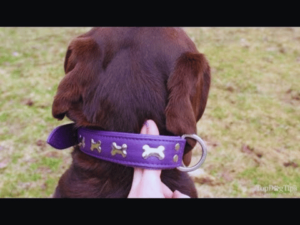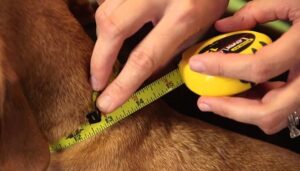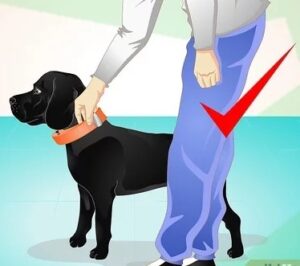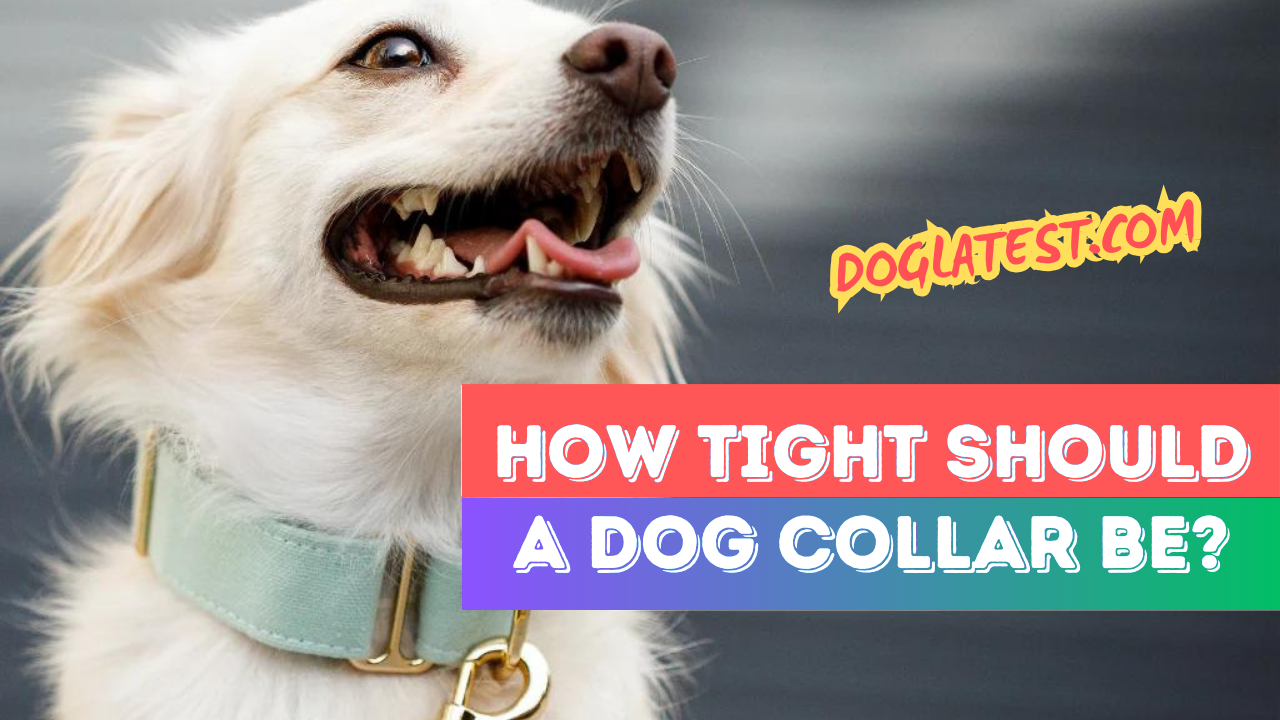Introduction of How Tight Should a Dog Collar Be?
Getting the right fit for your dog’s collar is crucial for their safety and comfort. A too-tight collar can cause injury, while one too-loose might slip off. Let’s go into making sure your dog’s collar fits just right.
Understanding Dog Collars

Types of Dog Collars
There are various types of dog collars, including flat collars, martingale collars, choke chains, and prong collars. Each serves different purposes and is suitable for different dog breeds and behaviors.
Choosing the Right Collar for Your Dog
Selecting the right collar depends on your dog’s size, breed, and temperament. For instance, flat collars are great for everyday use, while martingale collars work well for dogs with narrow heads.
Measuring Your Dog for a Collar:

Tools Needed
You’ll need a ruler, a piece of rope, and a flexible tape measure.
Steps to Measure Your Dog’s Neck
- Wrap the tape measure around the base of your dog’s neck, where the collar will sit.
- Make sure the tape is just snug enough.
- Note the measurement and add two inches for larger dogs or one inch for smaller dogs to ensure a comfortable fit.
Common Mistakes to Avoid
Avoid measuring too loosely or too tightly. Double-check the measurement to ensure accuracy.
The Two-Finger Rule
Explanation of the Two-Finger Rule
The two-finger rule is a simple guideline to ensure the collar isn’t too tight. It should be easy for you to put two fingers between your dog’s collar and neck.
Why It Works
This rule ensures the collar is snug enough to prevent slipping but loose enough to avoid choking or discomfort.
Adjusting the Collar for Comfort and Safety
Regularly check the collar’s fit, especially if your dog is growing or gaining/losing weight.
Signs Your Dog’s Collar is Too Tight
Physical Indicators
Red marks, indentations, and hair loss around the neck are signs the collar is too tight.
Behavioral Changes
If your dog scratches at the collar frequently or seems agitated, the collar might be too tight.
Health Risks
A tight collar can restrict breathing and cause injuries like skin irritation and damage to the trachea.
Signs Your Dog’s Collar is Too Loose
Physical Indicators
A collar that hangs loosely or can be slipped over the dog’s head is too loose.
Behavioral Changes
Your dog might paw at a loose collar or try to remove it.
Safety Risks
A loose collar can get caught on objects, posing a strangulation risk.
Adjusting the Collar for Different Activities
Everyday Wear
For daily wear, ensure the collar is comfortable and fits according to the two-finger rule.
Exercise and Playtime
Consider using a harness during vigorous activities to prevent the collar from causing discomfort.
Training Sessions
For training, a martingale collar can provide better control without the risk of choking.
Special Considerations for Puppies
Growth and Regular Adjustments
Puppies grow quickly, so check the collar fit weekly and adjust as needed.
Soft Collars for Sensitive Necks
Use softer materials to prevent irritation on a puppy’s sensitive skin.
Special Considerations for Senior Dogs
Adjusting for Mobility Issues
Senior dogs may require looser collars to accommodate reduced mobility and potential neck sensitivity.
Comfort and Safety First
Prioritize comfort by choosing padded collars or switching to a harness.
Using a Harness as an Alternative
Benefits of Harnesses
Harnesses distribute pressure across the dog’s body, reducing the risk of neck injuries.
When to Choose a Harness Over a Collar
If your dog pulls on the leash or has neck issues, a harness is a better option.
Monitoring Your Dog’s Collar Fit Regularly
Frequency of Checks
At the very least once a month, check the collar fit.
Seasonal Adjustments
Adjust the fit for seasonal changes, such as when your dog grows a thicker coat in winter.
Health Changes
Monitor for weight gain or loss and adjust the collar accordingly.
Collar Material and Fit
Impact of Different Materials
Leather, nylon, and fabric collars each have different durability and comfort levels.
Choosing the Right Material for Your Dog
Select a material that suits your dog’s activity level and skin sensitivity.
Training Your Dog to Wear a Collar

Introducing the Collar
Let your dog sniff and get used to the collar before putting it on.
Positive Reinforcement Techniques
Reward your dog with treats and praise when they wear the collar without fuss.
Common Myths About Dog Collars
Debunking Misconceptions
Some believe tight collars provide better control, but this can harm your dog.
Evidence-Based Practices
Studies show that properly fitted collars prevent injuries and improve your dog’s comfort.
Conclusion of How Tight Should a Dog Collar Be
Ensuring your dog’s collar fits properly is key to their well-being. Regular checks and adjustments will help maintain the perfect balance between comfort and safety. Remember, a well-fitted collar is essential for a happy, healthy dog.
Read More: How to Treat Shock Collar Wounds?
FAQs:
How often should I check my dog’s collar fit? You should check your dog’s collar fit at least once a month and adjust it as needed.
Can a collar cause injury to my dog? Yes, a collar that is too tight or too loose can cause injuries, including skin irritation, choking, and neck damage.
Which is best to use, a collar or a harness? It depends on your dog’s behavior and health. Harnesses are generally better for dogs that pull or have neck issues.
How can I tell if my dog is uncomfortable with their collar? Signs of discomfort include scratching at the collar, red marks on the neck, and changes in behavior.
What should I do if my dog has a reaction to their collar? Remove the collar immediately and consult your vet for advice on alternative options.

